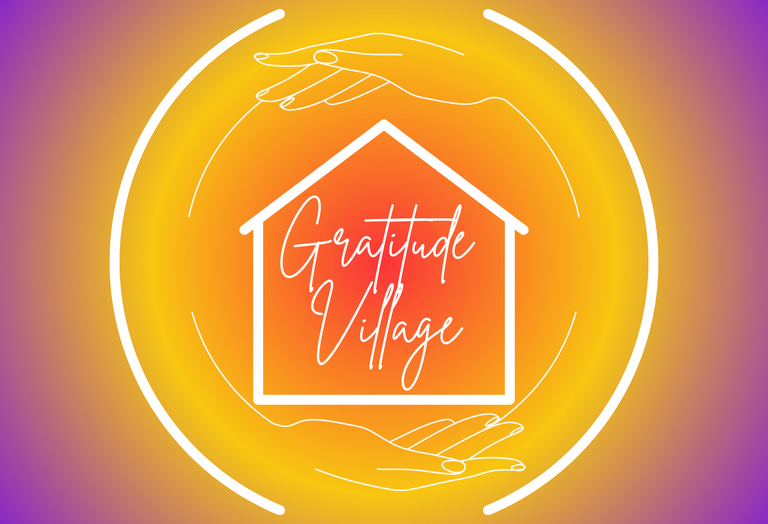Join our next In Person Info Session December 16 from 11am-1pm MST
How to Decide if Cohousing Is Right for You
Wondering if cohousing is a good fit for you? In this blog, we explore the key questions to ask when considering community living—your values, lifestyle, communication style, time, and finances. Discover how cohousing balances privacy with connection, reduces costs through shared resources, and supports families, singles, and elders alike. Learn what makes cohousing different from traditional neighborhoods and how to decide if this sustainable, cooperative way of life is right for you.
Gratitude Village
10/8/20254 min read


When you first hear about cohousing, it may sound intriguing, inspiring, or even a little overwhelming. The idea of living in a neighborhood where meals, gardens, and decisions are shared isn’t what most of us grew up imagining. In a culture that celebrates independence and privacy, cohousing can feel like stepping into another world. Yet for many, it’s the missing piece—a way to weave belonging, sustainability, and purpose into everyday life. So how do you know if cohousing is right for you? The answer begins with curiosity, honest reflection, and a willingness to imagine life differently.
The first step is to consider your values. Do you long for connection in a world that often feels isolating? Do you care deeply about the environment and want your lifestyle to reflect that? Are you interested in raising children in a supportive village or aging in a place where neighbors truly have your back? Cohousing communities, like Gratitude Village, are built on shared values: sustainability, cooperation, inclusion, and resilience. If those resonate with you, it’s a good sign you may find yourself at home in this model.
Next, think about your lifestyle. Cohousing is not the same as a commune or collective—it’s a neighborhood of private homes with shared spaces designed to bring people together. Residents choose how often to participate in community meals, work projects, or celebrations, but the expectation is that you’ll contribute in some way. If you enjoy potlucks, garden days, or casual conversations with neighbors on the porch, cohousing will likely feel natural. If you prefer absolute independence and never want to participate in group activities, cohousing might not be the best fit. It’s not about giving up autonomy but about leaning into interdependence.
A major factor to weigh is your relationship with conflict and communication. Living in community means differences will arise—about meals, budgets, or how often the common house should be cleaned. Thriving communities use tools like sociocracy, nonviolent communication, and restorative practices to navigate these differences. Conflict isn’t viewed as failure but as an opportunity for growth. If you’re willing to learn, listen, and sometimes compromise, cohousing offers a powerful environment for developing stronger communication skills and deeper trust with neighbors. If avoiding hard conversations is your default, cohousing may stretch you in ways that are uncomfortable—but also transformative.
Practical considerations matter too. Cohousing often appeals to people seeking affordability, though costs vary by location and design. At Gratitude Village, we’re committed to making up to 50% of our homes permanently affordable through creative financing and community land trust models. Still, joining cohousing requires financial participation, whether through deposits, membership fees, or ownership. It’s important to assess your resources and ask questions early. That said, many families discover that shared resources—like gardens, tools, guest rooms, and play areas—reduce their overall expenses and increase quality of life.
Another question to ask yourself: How do you feel about time? Cohousing thrives when residents invest hours into meals, meetings, and shared projects. It’s not endless work—it’s connection disguised as everyday life. Cooking once for 30 people means 29 nights when dinner is cooked for you. A morning spent in the garden is a chance to talk with neighbors while feeding your community. Communities that thrive often average hundreds of shared hours a week in their common house, and that activity is part of what makes life vibrant. If the idea of contributing time in exchange for belonging excites you, cohousing may be exactly what you’re looking for.
It’s also helpful to imagine different stages of life. Parents often ask: will my kids thrive here? The answer is usually a resounding yes. Children raised in cohousing benefit from safe play spaces, multiple mentors, and friends just steps away. Elders wonder if cohousing will support aging in place. Again, the answer is yes—neighbors can check in, provide companionship, and create networks of care. Singles and young adults wonder if they’ll belong among families, and in most communities, the mix of ages creates a balance that enriches everyone. If you can see yourself growing, learning, and giving in all stages of life, cohousing offers a continuity of care rarely found in traditional neighborhoods.
One of the best ways to decide if cohousing is right for you is to visit. Attend an information session, take a tour, or share a meal in a community if you can. Reading about cohousing sparks curiosity, but experiencing it brings the concept to life. You’ll notice the laughter of children, the hum of conversation at shared tables, and the ease of neighbors helping one another. You may find yourself thinking, “This feels like home,” or you may realize it’s not for you. Either way, visiting provides clarity that no brochure or blog can deliver.
Finally, ask yourself this: what kind of future do you want? In a world facing loneliness, climate change, and housing crises, cohousing is one of the most promising models for resilience. It’s not perfect—no community is—but it offers a framework for living with purpose, with people, and with the planet in mind. If you yearn for a neighborhood where you know your neighbors, share resources, and work toward common goals, cohousing could be the right path. If you prefer walls, fences, and independence above all else, traditional housing may suit you better. Both are valid choices—the key is aligning your home with your values.
At Gratitude Village, we believe deciding if cohousing is right for you starts with asking big questions about what you want from life. Do you want more connection, support, and sustainability? Are you open to learning new ways of living, working, and growing? If so, cohousing might be the home you’ve been searching for. It’s not about giving up independence—it’s about gaining community. And in today’s world, that shift might be the most valuable change you ever make.
COMMUNITY
Join us in embracing nature, diversity and connection.
Sustainability
DIVERSITY
info@gratitudevillageco.com
720-689-4821
© 2025. All rights reserved.
AFFORDABILITY
Gratitude Village Inc. is a 501(c)3 charitable corporation that values diversity, equity, and inclusion as essential to our mission
Subscribe to our Substack
Refund Policy




Gratitude Village is a Proud Member of these organizations
